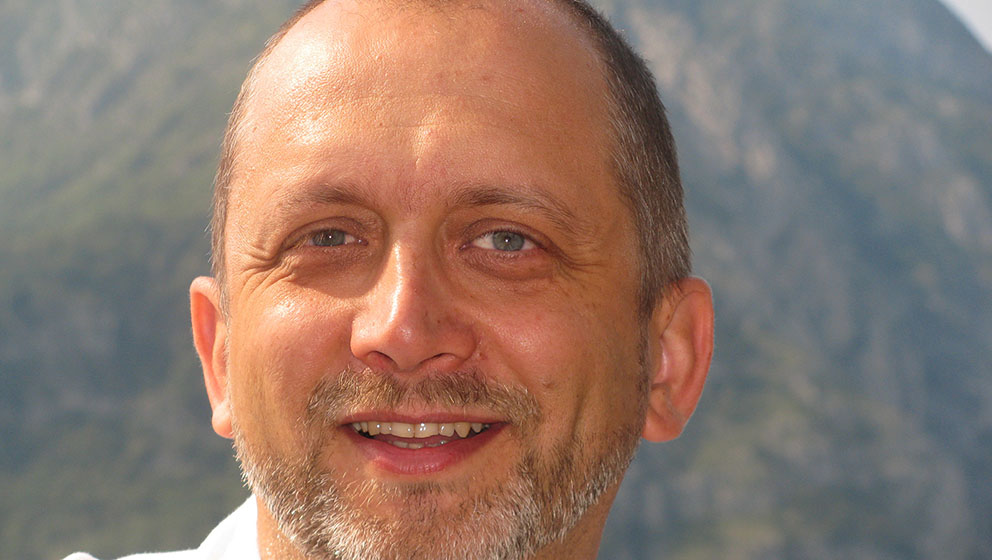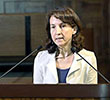Tech news. Riding the new digital wave - Giuliano Pozza (Chief Information Officer at Cattolica)

GIULIANO POZZA is CIO (Chief Information Officer) at Università Cattolica del Sacro Cuore. Before joining Cattolica, Giuliano was CIO at San Raffaele Hospital, Don Carlo Gnocchi Foundation Onlus and Humanitas Clinical Institute.
The use of technology has meant that we have been able to continue to deliver courses to our students via distance learning and has given staff the possibility of working safely from home. IT is so often taken for granted but in situations of emergency like this although it operates behind the scenes it ensures normal (or extraordinary) activities to carry on. As CIO, how did you manage the IT situation that emerged from the COVID-19 emergency?
Like most universities and institutions in Italy, we have been somewhat overwhelmed by this crisis. In fact, nobody was ready for it. Fortunately, there were a number of platforms and resources already available and we have a tight, professional team that meant we could react in the space of two weeks. It is no exaggeration to say that in three weeks we have done what would normally have required three years.
We have compressed everything. To achieve this result there were a number of fundamental things.
-
Team collaboration and the sacrifice of e.g. evenings and weekends, not only by the information systems professionals but by the other administrative staff that were involved as well.
-
Working closely with other corporate functions was key: ILAB, Academic Services, Logistics, Organization, and so on.
-
Full support from University top management and the understanding demonstrated by colleagues.
From the point of view of management of the emergency situation related to COVID-19 I would like to highlight the following points:
-
Setting up integrated teams focusing on specific topics.
We set up various teams: an IT team dedicated to remote working; an IT+ILAB team with a focus on eLearning; and an IT+Teaching & Learning team for exam management. It is now very clear that projects can no longer be considered as just IT projects and coordination with other corporate functions has become essential, as are speed in execution and constant feedback from the users. There are core principles of agile governance we are trying to apply. -
Daily emergency meetings with other directors for alignment.
To avoid the risk of differing paths being taken or time not being used efficiently, daily meetings with other directors were organized so as to share and resolve critical points effectively and proactively. -
Setting up an integrated emergency Helpdesk (IT+ILAB) on tech and eLearning in just three days - for all users, but in particular for teachers. Building on the structure of the existing IT Helpdesk, at peak demand time it would involve ten people at first level and as many again at second level. Although there were some teething problems initially, everyone got on board with different levels of difficulty. One aspect worth highlighting is how understanding everyone was, considering that the transformation from analogue to digital delivery was not a simple change to enact.
Can you describe the steps you had to take to adapt the University’s technological resources to the changing situation?
To date we have experienced three big waves of change (and the fourth is coming):
-
Activation of eLearning for everyone. Rather than being an issue of technologies (the University had already been using Blackboard, a leading platform, for a number of years) this was more a question of change management. We have not introduced different platforms, since in times of emergency it is better to use what you already have in house. We analyzed the type of usage by teachers and estimated the support that would be required. We activated daily ILAB + emergency Helpdesk webinars, as well as training where needed.
-
The second wave of change was remote working for everyone: from 0 to 1200 administrative staff all doing remote working. Given the large numbers and relative supply problems, a traditional approach (portable + VPN) was not in the plan. Within one week, secure remote access solutions were organized for all and the SOC security controls were strengthened at the same time.
-
The third wave dealt with course exams and final exams.
This too was an issue of change management. The TEAMS platform was chosen but the problem here was to do with what people were used to. To support users (both teachers and students) daily webinars were organized. Sometimes the problem is more to do with getting used to the platform rather than training in the basics. Psychological aspects also play a part, especially anxiety and tension related to exams. During the webinar the technician in charge did 15 minutes of training in the basic functions.
Together with the Learning & Teaching team a Q&A offered technical, regulatory and didactic support. Another tool that we offered were free-flow sessions (tests to check usability) with a view to lowering anxiety levels. These sessions were open 24/7 with a technician available during office hours. Our aim was to provide a 360° service, not only from a technical point of view: even what might seem like trivial suggestions really made a difference and removed a lot of anxiety. We held sessions with more than 200 students connected.
Now we have to think about “the day after tomorrow”, which will be the fourth wave. We understand that there won’t be a black and white changeover, but it is likely that there will be a gradual reopening with some students physically in attendance and others connected from home. In addition, there is the issue of managing social distancing and a “Smart campus” is fundamental for this. Alongside the many opportunities, there is also a level of risk which challenges us to avoid the digital divide which might leave behind categories such as disabled students or those who do not have adequate technological resources available.
Was there already a plan for smart working for the majority of university staff or did you have to specially prepare something?
No. There were only specific people e.g. IT technicians who were already enabled and equipped with technology for remote connections in an emergency. The infrastructure team did a splendid job of getting remote working solutions up and running in just one week.
What was the role of your team in supporting the technological adaptation of teaching and learning services?
We have provided a lot of support:
-
A revision of the architecture and evolution of e-learning products: Blackboard has been a reliable partner but there has been an incredible increase to deal with. In fact, we must also take into account the increase in demand for cloud services (Blackboard has seen an increase of 20 times its previous capacity, Microsoft 700% more).
-
Training on collaboration platforms such as TEAMS and setting out back-up plans (establishing primary and secondary platforms in emergencies).
-
The important role of the IT Helpdesk. We would normally have had three people operating the telephone Helpdesk and this number went up to ten at this stage.
We provided support to users, “protecting” some of our most valuable resources, the ILAB experts. The risk was that they would be overwhelmed by demand for support. We therefore created this first level emergency Help Desk made up of IT technicians and with ILAB responding only at the second level, keeping their specific skills separate from the onslaught of general questions.
Based on your experience at this time, what suggestion would you give to colleagues in another university?
I think I would give three suggestions:
-
Always have a plan B. There is stress on tech platforms.
-
Monitor a few basic key performance indicators e.g. the number of recorded lessons, the number of support requests still active, and the type of support requests. We also managed a feedback questionnaire for teachers to keep on top of the detail of support. With this monitoring we would have been travelling blind.
-
Internal coordination and communication are of paramount importance.
One last point: this has been a violent digital transformation – in fact it has been a revolution rather than a transformation. But “violent delights have violent ends”, to cite Westworld. This crisis is proving a great opportunity. We must now recover the true meaning of digital evolution which is not to simply change analogue to digital but to change the way we do things. For example:
-
Rethinking methodology e.g. the flipped classroom.
-
Inclusion is essential e.g. for disabled students and for those who do not have adequate tools.
-
Reviewing evaluation. AI tools are fine as far as using them for proctoring is concerned, but everything has to be rethought. The notional exam no longer makes sense and the teachers are well aware of this. Digital transformation requires rethinking your habits and integrating tools to give you more possibilities.
I cannot close without reminding myself that the “human factor” is the real key success factor in these difficult times. I want to thank in a special way every team involved in operations and development in IT and in all the other departments: without the contribution and sacrifice of every single person it would not be possible to manage this difficult transition. And I want to thank as well any colleague and any student who gave us precious feedbacks on service status and on unmet needs: we achieved so much but we are conscious that we have still so much to do together!
Article featured on Worldbound, edition n.4-2020.


 Community engagement. Apart but not alone
Community engagement. Apart but not alone And the world stood still
And the world stood still Tech news. Riding the new digital wave - Federico Rajola, Director of ILAB (Center for Digital Innovation)
Tech news. Riding the new digital wave - Federico Rajola, Director of ILAB (Center for Digital Innovation) Faculty. Standing together for Science - Professor Roberto Cauda
Faculty. Standing together for Science - Professor Roberto Cauda Looking forward. A conversation with Professor Antonella Sciarrone Alibrandi
Looking forward. A conversation with Professor Antonella Sciarrone Alibrandi Meet the experts. Higher Education Internationalizations VS COVID-19 - Gianluca Samsa, Università Cattolica del Sacro Cuore
Meet the experts. Higher Education Internationalizations VS COVID-19 - Gianluca Samsa, Università Cattolica del Sacro Cuore Meet the experts. Higher Education Internationalizations VS COVID-19 - Léa Senn, Università Cattolica del Sacro Cuore
Meet the experts. Higher Education Internationalizations VS COVID-19 - Léa Senn, Università Cattolica del Sacro Cuore Meet the experts. Higher Ed Internationalizations VS COVID-19 - Gary Rhodes, California State University at Dominguez Hills
Meet the experts. Higher Ed Internationalizations VS COVID-19 - Gary Rhodes, California State University at Dominguez Hills International students. Student voices from the lockdown
International students. Student voices from the lockdown Student mobility in the time of COVID-19. Corrado Cavalli, exchange student at Hanyang University (Seoul, South Korea)
Student mobility in the time of COVID-19. Corrado Cavalli, exchange student at Hanyang University (Seoul, South Korea) Student mobility in the time of COVID-19. Andrea Riccio, Exchange student at Groupe ESSCA Shanghai (Shanghai, China)
Student mobility in the time of COVID-19. Andrea Riccio, Exchange student at Groupe ESSCA Shanghai (Shanghai, China)